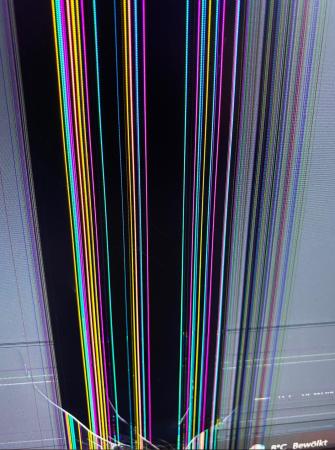I unfortunately dropped a pointy object and it pierced a tiny area of my monitor (AOC U32E2N). I was surprised to see that the whole area of the impact (where physical damage can be seen) is essentially extending to the top and bottom of the monitor with black or pure C, M, Y or K (or white) colored lines - i.e there are vertical lines of the same color from top to bottom in the damaged area, but almost no horizontal lines.
I know that I have seen similar damage pictures for TVs and other monitors as well. This made me wonder, why would a damage to a pixel cause the entire column to be broken? Are they linked together?

